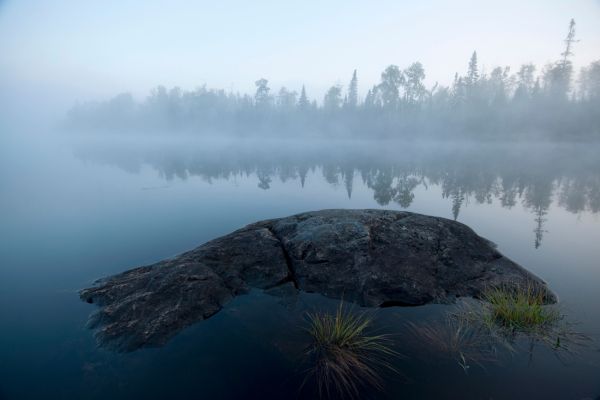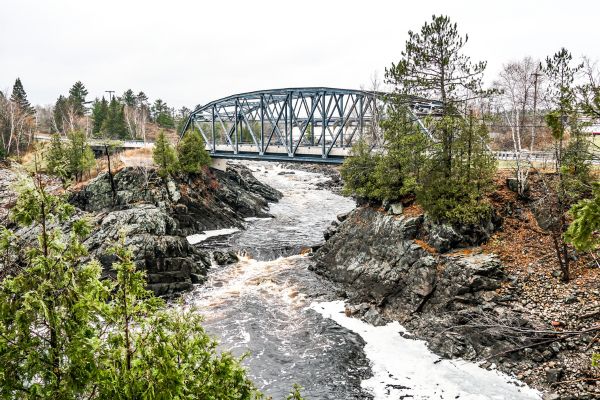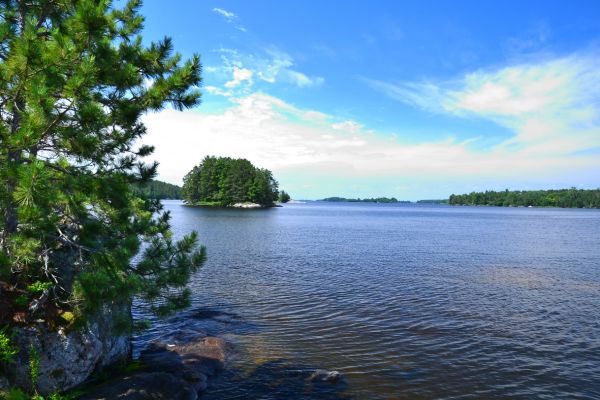Your Go-To Minnesota Camping Guide
Calling all nature lovers! Minnesota is beckoning you to unplug and unwind in its vast wilderness. It doesn’t matter if you’re a seasoned camper seeking remote adventures in the Boundary Waters or a family looking for a fun-filled getaway at a full-service campground, Minnesota caters to all styles.
Hike through scenic trails, fish for walleye on a crystal-clear lake, or simply relax under a star-filled sky. So ditch the screens, embrace the fresh air, and experience the magic of camping in Minnesota!
Best Places To Camp In Minnesota
Afton State Park
Located just a 30-minute drive from the Twin Cities metro area, Afton State Park provides a convenient escape into nature. The park boasts diverse landscapes, including rolling prairies, hardwood forests, and the scenic St. Croix River. Campers can choose from campsites with various amenities, including electricity, showers, and flush toilets. Afton State Park offers various activities for all ages, like hiking, biking, canoeing, and horseback riding.

Boundary Waters Canoe Area Wilderness
Encompassing over a million acres of pristine wilderness, the Boundary Waters Canoe Area Wilderness is a haven for experienced paddlers and backpackers. This vast network of lakes, rivers, and islands offers unparalleled opportunities for exploration and solitude.

Jay Cooke State Park
Nestled along the St. Louis River, Jay Cooke State Park features dramatic sandstone cliffs, cascading waterfalls, and old-growth forests. Campers can choose from campgrounds with basic amenities or opt for more rustic campsites deeper within the park. Jay Cooke State Park offers a variety of activities, including hiking, biking, rock climbing, and cross-country skiing in the winter.

Tettegouche State Park
Situated on the shores of majestic Lake Superior, Tettegouche State Park is known for its breathtaking natural beauty. The park features towering cliffs, secluded coves, cascading waterfalls, and diverse plant life. Campers at Tettegouche can enjoy stunning views of the lake, explore hidden beaches, hike through scenic trails, and go kayaking or canoeing on the water.

Voyageurs National Park
Bordering Canada, Voyageurs National Park encompasses over 218,000 acres of stunning lakes, forests, and rocky islands. This unique park is best explored by boat, offering visitors a chance to experience the tranquility of the wilderness and encounter diverse wildlife populations. Voyageurs National Park provides various camping options, including campsites accessible by boat and houseboat opportunities.

Things To Do In Minnesota
Mall of America
Located in Bloomington, just outside of Minneapolis, the Mall of America is the largest shopping mall in the United States by total square footage. It boasts over 500 stores, including major department stores, specialty shops, and brand-name outlets. The mall also features a variety of entertainment options, such as Nickelodeon Universe, an indoor amusement park; SEA LIFE Minnesota Aquarium; and a movie theater.
Minnesota's North Shore Scenic Drive
Stretching roughly 150 miles along the shores of Lake Superior from Duluth to Grand Portage, the North Shore Scenic Drive is a breathtaking journey through stunning natural beauty. Visitors can marvel at dramatic cliffs, cascading waterfalls, and pristine beaches. The drive also winds its way through charming towns and villages, offering opportunities to explore local culture and history. Additionally, numerous state parks and recreation areas provide access to hiking trails, camping opportunities, and various outdoor activities.
Minneapolis Institute of Art
Situated in Minneapolis, the Minneapolis Institute of Art (MIA) houses a world-renowned collection of over 89,000 works of art spanning various cultures and time periods. Visitors can explore galleries featuring European, American, African, Asian, and Islamic art, including paintings, sculptures, textiles, and decorative objects. The museum also hosts a variety of special exhibitions throughout the year, offering opportunities to delve deeper into specific themes and artistic movements.
Voyageurs National Park
Located in northern Minnesota along the Canadian border, Voyageurs National Park is a haven for outdoor enthusiasts. This vast wilderness area, comprising numerous lakes, forests, and islands, is best explored by water. Visitors can embark on kayaking or canoeing trips through the interconnected waterways, encountering diverse wildlife and experiencing the tranquility of the park's remote beauty.
The Twin Cities (Minneapolis and St. Paul)
Minnesota's vibrant capital city, St. Paul, and its larger neighbor, Minneapolis, collectively known as the Twin Cities, offer a dynamic mix of urban experiences. St. Paul boasts a historic downtown with a beautiful state capitol building, while Minneapolis is known for its thriving arts and culture scene, including renowned theaters, museums, and live music venues. Both cities offer a variety of restaurants, shops, and nightlife options, ensuring something for every visitor's taste and interest.
Itasca State Park
Located at the headwaters of the Mississippi River in north-central Minnesota, Itasca State Park is a popular destination for nature enthusiasts and history buffs. Visitors can explore the park's diverse landscapes, including forests, lakes, and wetlands, by hiking, biking, or paddling on the Mississippi's headwaters.
Split Rock Lighthouse State Park
Situated on the North Shore of Lake Superior, Split Rock Lighthouse State Park offers stunning views of the lake and the iconic Split Rock Lighthouse, a historic landmark built in 1910. Visitors can tour the lighthouse, learn about its history, and explore the surrounding park area, which includes hiking trails, picnic areas, and a swimming beach.
Como Park Zoo and Conservatory
Located in St. Paul, Como Park Zoo and Conservatory is a popular destination for families and nature lovers. The zoo features a wide variety of animals from around the world, while the conservatory houses a diverse collection of plants, including tropical and desert species. Visitors can also enjoy other attractions at Como Park, such as a carousel, a miniature golf course, and a Japanese garden.
Mille Lacs Lake
Located in central Minnesota, Mille Lacs Lake is the state's second-largest lake and a popular destination for fishing, boating, and other water-based activities. The lake is known for its walleye fishing, attracting anglers from all over the country. Additionally, the surrounding area offers opportunities for camping, hiking, and exploring historic sites.
Saint Anthony Falls
Located in Minneapolis, Saint Anthony Falls is the only major waterfall on the Mississippi River, offering a unique natural wonder within the city limits. Visitors can explore the area by walking across the Stone Arch Bridge, visiting the Mill City Museum to learn about the history of flour milling, or taking a boat tour for a closer view of the falls.
Grand Portage National Monument
Situated on the North Shore of Lake Superior near the Canadian border, the Grand Portage National Monument commemorates the history of the Grand Portage fur trade route, which was vital for the economic development of the region during the 18th and early 19th centuries. Visitors can explore reconstructed buildings and exhibits at the historic Grand Portage Rendezvous, participate in cultural programs, and learn about the Ojibwe people who played a significant role in the fur trade.
Olmsted County History Center
Located in Rochester, the Olmsted County History Center delves into the rich history of the region, encompassing various aspects from early settlements to the development of the Mayo Clinic, one of the world's leading medical institutions. Visitors can explore permanent and temporary exhibits, participate in educational programs, and gain a deeper understanding of the area's past.
Frequently Asked Questions
Become a Go Camping America Member!
Unlock a world of exclusive resources and elevate your RV travel experience with GoCampingAmerica.com membership. As part of the thriving community of OHI, the leading voice for private RV parks and campgrounds in North America, you'll gain access to invaluable tools and expert knowledge to make your next RV trip unforgettable.
Our powerful RV trip planner empowers you to pinpoint campgrounds that perfectly match your needs, compare options along your route, and discover hidden gems you wouldn't find anywhere else. Go beyond basic campsite searches with member-only guides packed with insider tips, curated recommendations, and valuable resources from seasoned RV travelers and industry professionals. Remember, your membership grants you access to all the benefits of GoCampingAmerica.com, including searching a database of millions of campers and campgrounds, finding engaging activities and resources to plan your next adventure, and accessing general camping information and expert advice.

